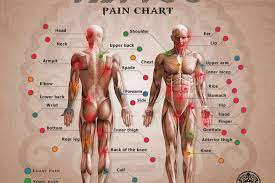tattoos on the feet can be painful. This is due to the thin skin and lack of muscle or fat padding. The lack of cushioning makes the needle strokes more noticeable.

Close to the bones
The foot area is close to your bones. This can make you feel like the tattoo gun directly hits the bones. This sensation can be distressful, especially for ticklish people. The nerve receptors in this area are expansive and sensitive.
Top of the Foot
The top of your foot comprises bones, thin skin, and many nerve endings. This makes tattooing very painful.
It’s wise to bring a topical anesthetic gel when getting a foot tattoo. This will reduce pain and sensitivity. Feet are low in fat and muscle content, so they are prone to infections. Cleanliness for at least two weeks post-tattooing will maintain your tattoo’s condition.
The top surface of your foot has many tendons and muscles. These are crucial for body support and movement. Injuries or health conditions can damage these structures and cause pain.
Bottom of the Foot
Many people experience foot pain at some point. This can be due to plantar fasciitis or Morton’s neuroma. These conditions cause severe discomfort under or in the foot’s arch, usually in the early morning after sitting or walking.
tattoos on this part can be very painful. This is because it’s close to bones and nerves.
The bottom of your foot has more nerve endings. This makes tattooing more painful. An untrained artist could make it even worse.
Inside of the Foot
Tattooing on the inside of the foot is challenging. This is because of nerve receptors, thin skin, and many tendons and bones. The needle comes close to the bone when tattooing, causing intense discomfort.
Tattoo artists usually avoid this area because it’s painful and challenging to design.
The foot has many bones, joints, tendons, and muscles. When any of these parts get damaged, symptoms like plantar fasciitis, bunions, flat feet, heel spurs, or hammertoes can occur.
Outside of the Foot
Many well-known painful foot conditions include heel spurs, bunions, and hammertoes. However, less joint external foot pain can also be distressing.
Sprains, strains, stress fractures, soft tissue masses, arthritis, or nerve impingements can cause pain outside the foot. Peroneal tendonitis is a common condition. It causes irritation and inflammation to the peroneal tendons from the lower leg to the outside and bottom of the foot. This makes walking difficult and can lead to long-term damage if untreated.
Pain outside your foot could be due to bone and tissue compression or a Jones fracture. For these reasons, you should see a physician if you experience symptoms on the lateral borders of your foot. These could indicate more severe conditions that need immediate treatment.

